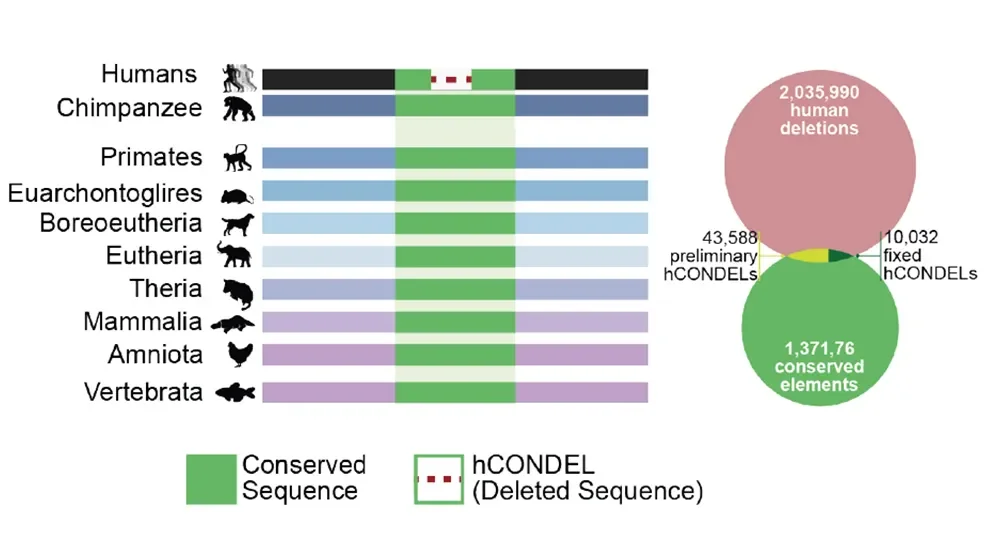Genetic differences underlying uniquely human traits

Humans share much of their genetics with other primates, but there are key differences that provide our uniquely human traits. Previous studies have looked at the larger differences between species, but a paper in Science, "The functional and evolutionary impacts of human-specific deletions in conserved elements," delves a little deeper. It reveals new insights into small human-specific genetic deletions, averaging less than three base pairs long, found in sequences that are conserved (stay the same) in non-human species. A group led by researchers at Yale University, the Broad Institute of MIT and Harvard, and including Jackson Laboratory Associate Professor Ryan Tewhey, Ph.D., identified and characterized more than 10,000 human-specific Conserved Deletions (hCONDELs) enriched for human-specific brain functions. Of these, 800 demonstrated significant differences in regulatory activity in six cell types, and the research team found specific deletions that appear to provide human-specific effects on brain development. The findings will be important for further investigation of the evolutionary mechanisms that produce the traits that distinguish humans from other species.
Learn more about Ryan Tewhey and his work: https://www.jax.org/news-and-insights/2022/May/genome-explorer
Recent research into regulatory networks in non-coding DNA: https://www.jax.org/news-and-insights/2022/December/finding-the-gene-silencers

